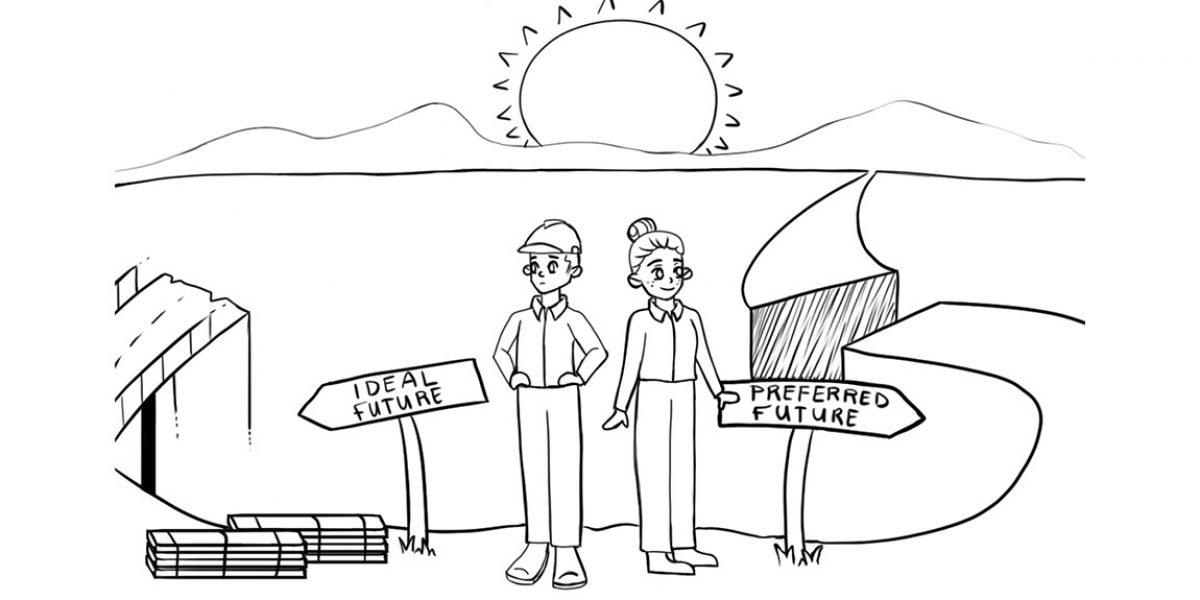If you have ever tried to meditate you have probably had the experience of noticing how often your “quiet mind” is interrupted by your own thinking. If you pay attention to what you are thinking about, you will notice that all your thoughts fit into one of these four categories:
- the past
- the future
- other people/the world you live in
- yourself
Depending on what category of thoughts your mind goes to, your emotional brain and heart follow along.
If you are thinking about the past, you are likely to inject energy into feelings of guilt, nostalgia, or regret. If your memories are ones that you have become proud of, feelings of gratitude and appreciation will float to the surface.
If you are thinking about the future, you might feel hope and optimism, or fear and pessimism.
If your “quiet mind” is interrupted by thoughts about others or the world you live in, your feelings might involve anger, jealousy or bitterness while on the brighter side, gratitude, respect, admiration, peace and security.
If your thoughts are about yourself, the corresponding feelings might be on the insecurity – grandiosity spectrum. If you tend towards feeling insecure or unconfident, your thoughts tend to be overly self-critical. On the opposite end, if you feel like you are THE BEST then your thoughts lead you to believe that you can accomplish anything you want.
Having constant thoughts in any of the four categories is perfectly normal. This is what makes us human. In fact, mindfulness meditation is not about eliminating these thoughts, it’s about becoming aware of them and allowing them to come and go without judgement. In my experience, mindfulness is a great way to calm down, develop self-awareness, become kinder towards yourself and exercise metacognition – your ability to think about your thinking.
But mindfulness meditation alone is not going to help you create change. If you want to do more than accept your present reality, then you need to re-direct your mind towards useful thoughts. You want your thoughts to produce results.
You can begin to direct your thoughts by starting with the end in mind. That requires that you spend time thinking optimistically about the future. Defining what that end really looks like is often the biggest challenge. Organizations refer to this as their mission and vision; individuals refer to it as their dreams and aspirations; my coaching mentors refer to is as a “memory of the future;” and some activists refer to it as utopia.
Now here’s what’s really interesting; the more ambitious your visions of the future are, the bigger the change you are after. The bigger your ambition, the bigger the gap between your current reality and your ideal future. This means you will need more resources, support and creativity to bridge the gap between your present reality and the ideal future.
One way of bridging that big gap is to make your ideal future feel more familiar to you. This will make it feel more achievable and less overwhelming. And how do you make it more familiar? By tapping into your visual cortex and using your imagination.
Visualizations have become a popular tool for making the desired future become vivid and alive in our imagination. Visualizations focus your thoughts on an ideal future to the point that you can feel, smell and touch that future. Professional athletes use visualization techniques to prepare themselves for a competition. And research has shown that visualizing can be just as powerful and sometimes even more effective than extra hours of training. Daydreaming about your ideal future is a sure way of practicing visualization. Writing a description of your ideal future is another way of visualizing it. Think about it, there are many things we have achieved in the history of humanity which were considered impossible at some point in time. Many of those ideas appeared in science fiction writing before they even became part of our realm of possibilities.
On the other hand, if the end you have in mind is not so far off, coaches refer to this as your preferred future as opposed to your ideal future. In this case, the gap between the present and the future is not as large, and all you need, to create the desired change, is a boost in self-esteem and the courage to move towards it, despite your fears.
Whether you have a preferred future or an ambitious ideal future, you are most likely to be successful in reaching it by creating a memory of that future. I invite you to do so at my upcoming workshop “A Date with your Future Self” at the Toronto Change Days Conference. If you “memory of your future” feels really blurry and even intimidating, consider booking a one-on-one coaching session here.
It is possible to narrow the gap between your present reality and your desired future without having to compromise on your ideal results. The trick is to spend some time allowing your busy brain to have thoughts about the past but focusing on those interpretations of your memories which awaken positive feelings such as pride and a sense of resourcefulness. This will strengthen your self-esteem and your likeliness to take a risk in the path towards your ideal future.







